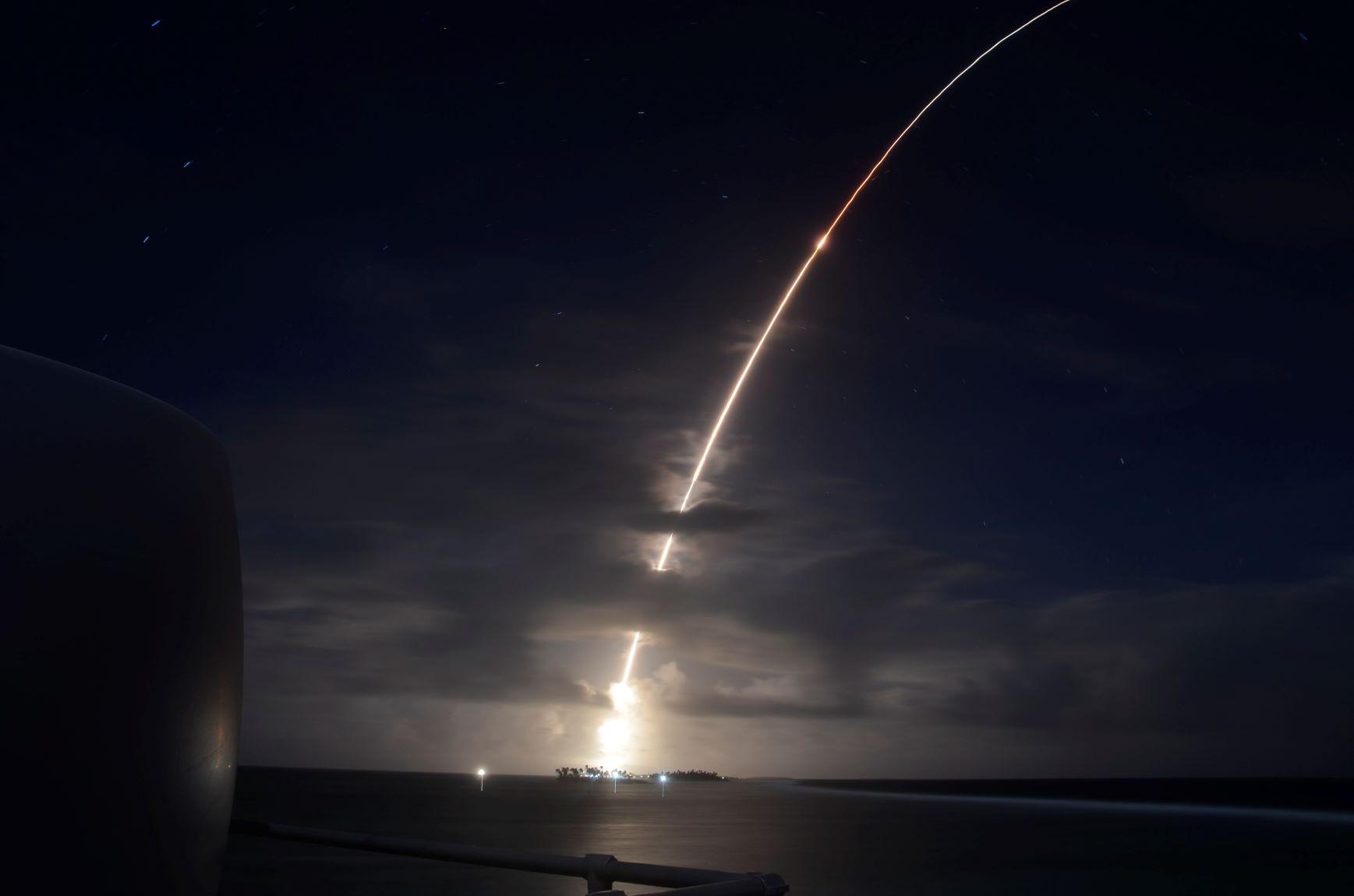
A prominent critic of U.S. missile defense agrees that a test of the system two weeks ago was a success. And that’s why former Assistant Secretary of Defense Philip Coyle is more concerned than ever that the system is fueling a new arms race with both Russia and China.
For decades, Coyle has called missile defense a colossal waste of money and a dangerous, destabilizing provocation for Russia – and now, China. But Coyle conceded in an interview last week that an interceptor like those based at Fort Greely did indeed destroy its target during the March 25 test.
“It was a success,” Coyle said, “in the sense that they did hit the target, with the first interceptor.”

Missile-defense supporters like Riki Ellison were much more enthusiastic in their response to the test, in which two interceptors launched from Vandenberg Air Force Base in California destroyed an incoming dummy missile over the South Pacific.
“It’s given us a tremendous leap in confidence and reliability in the system that’s in place today can shoot down anything and everything North Korea has,” Ellison said.
Ellison is chairman and founder of the Missile Defense Advocacy Alliance. The Virginia-based organization says it “seeks to educate the general public with respect to missile defense issues and the urgent need for it.”
“It is the most complex test the United States has ever done on missile defense,” Ellison said in an interview last week.
Coyle is the Senior Science Fellow at the Center for Arms Control and Non-Proliferation. His bio on the Washington, D.C.-based organization’s website says he’s an expert on national security policy, global military issues and defense spending, research, development and testing. He says the successful test deepened his concerns about missile defense, because he believes it’s part of a that is accelerating an arms race with Russia and China.
“The United States is fielding more and more missile-defense systems, not just the GMD system there in Alaska,” Coyle said.
He’s referring to the Ground-based Midcourse Defense component of the multi-layered U.S. missile-defense system. The GMD component is intended to counter long-range intercontinental ballistic missiles from such so-called rogue states as North Korea. Almost all of the 44 GMD interceptors are based at Fort Greely, which controlled the March 25th interception.
Coyle says Trump’s order to add 20 more interceptors at Greely and to grow the system’s short- and mid-range components is forcing Russia and China to develop countermeasures.
“All of this is causing Russia and increasingly China to build more and more offensive systems, so that they can overwhelm U.S. missile defenses – assuming that they would work,” he said.
Coyle cites Russia’s development of hypersonic missiles that travel at Mach 5 and nuclear-powered missiles that can loiter for long periods out of range of the GMD system. And also China’s buildup of both offensive and defensive systems, based on land, sea, air and space.
“We have no way of dealing with more and more missiles from Russia or China,” Coyle said. “And so building up more and more missile-defenses is backfiring.”
He says plans for increasing the buildup, as outlined in the Pentagon’s most recent Missile Defense Review, along Trump’s rhetoric suggesting North Korea’s missiles aren’t the only ones targeted by the interceptors, confirms our adversaries’ suspicions.
“Our goal is simple: to ensure that we can detect and destroy any missile launched against the United States anywhere, anytime, anyplace,” Trump said in a Jan. 17 speech, the day the Defense Department issued the updated Missile Defense Review.
Ellison, the missile defense advocate, scoffs at Coyne’s claims. He says U.S. missile defense doesn’t change the Mutual Assured Destruction balance that for decades has kept both sides from attacking. And he says neither Russia nor China are building up their fleets of ICBMs.
“So that’s another false argument against the system,” Ellison said.
The Missile Defense Review released in January, however, says China has added a new generation of land- and submarine-launched ICBMs to its inventory, many of which can carry multiple warheads. The document says China also is developing its own hypersonic and maneuverable warheads, capable of eluding missile defenses.
Tim Ellis is a reporter at KUAC in Fairbanks.




